Updated: February 15, 2019
What are the Best Portable Oxygen Concentrators?
1.ResMed Mobi | 2. Philips Respironics SimplyGo Mini | 3. Inogen G3 | 4. Inogen G4 | 5. Philips Respironics Simply Go
Frequently Asked Questions
What is an Oxygen Concentrator? | What’s a Portable Oxygen Concentrator? | What’s the Difference Between a CPAP Machine and an Oxygen Concentrator? | Can You Sleep With an Oxygen Concentrator? | Is an Oxygen Concentrator Covered by Medicare?
Just because you need supplemental oxygen, it shouldn’t mean you have to be tied to an outlet. Oxygen concentrators are getting smaller, lighter, and more portable; so now there are more reasons than ever to go with a portable oxygen concentrator. Going portable means more time with family, a trip to the market, or even catching a play or movie.
If you’re ready to take your oxygen therapy on the go, it helps to have one of the best portable oxygen concentrators. To make things easier, we’ve reviewed top concentrator models so you’ll be able to sort out which ones will work for you.
1. ResMed Mobi Portable Oxygen Concentrator
Released in 2018, the ResMed Mobi is the newest oxygen concentrator at CPAP.com and features an internal battery which can last up to 6 hours, depending on settings. This is the longest runtime for the standard battery of any of the machines we reviewed.
As an optional accessory, ResMed makes a small external battery that can add another 3 hours, should the need arise. The concentrator also weighs in at a little over 5 pounds, about average for portable oxygen.
Customers will also appreciate the stylish low profile shoulder strap and carrying case, similar to the styling found on the travel case for the AirMini AutoSet CPAP Machine. The Mobi features classic ResMed quality in a small package. We especially like the light weight of the extended external battery, meaning you’d have to carry around less bulk as you start your day.
General Information
- Operating Mode: Pulse Dose
- Oxygen Flow Settings: 1 – 4
- Maximum Altitude: Up to 10,000 feet
How long does this oxygen concentrator last:
For portable oxygen concentrators, the ResMed Mobi has an outstanding warranty of 5 years, which is better than any other concentrator we reviewed. If properly maintained, the ResMed Mobi could provide the owner with many years of service.
How many batteries can the concentrator hold?
The ResMed Mobi uses one internal battery as the base, and unlike other models we reviewed, the ResMed Mobi can operate with a second battery plugged in. When depleted, it will automatically switch over to the internal battery.
How long does it take to recharge the batteries?
The internal battery takes 6.1 hours to charge while in use, but only 3.6 hours to charge if resting. The 3.6 hour resting charge time is one of the best we’ve seen in this review.
Quality Ratings
TOTAL SCORE: 76%
Weight / Lightweight: 7
The weight of this device is a little heavier than the average weight we’ve seen in the machines we’ve reviewed so far, but ResMed includes a stylish, low profile carrying case to make up for it.
Size / Small / Freedom of Movement: 6
As far as size and weight go, this machine is about average.
Cost: 8
This concentrator is one of the least expensive we’ve reviewed so far, and its price point is very similar to the Inogen “G” series of machines, currently retailing at over $2,200.
Battery Quality: 9
The internal battery for the ResMed Mobi lasts approximately 6 hours, which is the longest duration for single batteries we’ve reviewed thus far. When you factor in the small size and weight of the extended battery, it’s a very attractive package.
Charge Time: 7
While the charge time when not in use is fantastic (3.6 hours) if you require constant oxygen therapy, and need to use the machine all the time, the recharge time goes up to 6.1 hours for just the single battery.
Travel / Portability: 8
The ResMed Mobi is FAA approved, and easy to carry, earning it high marks for portability.
Warranty: 9
The warranty is 5 years, which is the longest warranty among concentrators we reviewed.
Noise Level: 6
The ResMed Mobi is a little louder than some of the other machines (43 decibels). Higher flow settings will result in greater noise.
Oxygen Purity: 8
This machine has oxygen purity levels above 87%.
User-Friendliness: 8
The ResMed Mobi is really easy to use and has a simple interface.
2. SimplyGo Mini
The SimplyGo Mini is a smaller version of the SimplyGo, with a few key differences. While the SimplyGo is able to provide continuous flow oxygen, the SimplyGo Mini only operates in pulse dose mode. By only working in pulse dose mode, the SimplyGo Mini saves a lot of extra weight over its bigger cousin, and it’s easier to carry. It also has a much longer battery runtime, with the double battery able to last for as many as 9 hours!
It also recharges fairly quickly, going from empty to full in about 4 hours. It’s also relatively light, the weight with the single battery tops out at 4 pounds. Overall, the SimplyGo Mini comes with a lot of improvements over the SimplyGo, and it’s one of the reasons it’s one of the best rated portable oxygen concentrators.
Here’s some of the highlights about this product:
General Information
- Operating Mode: Pulse Dose
- Oxygen Flow Settings: 1 – 5
- Maximum Altitude: Up to 10,000 feet
How long does this oxygen concentrator last:
The oxygen concentrator is under warranty for 2 years, but this can be extended to 3 by purchasing the extended warranty. Even after the warranty runs out, the concentrator can last for much longer than 3 years, if properly maintained.
How many batteries can the concentrator hold?
This concentrator only uses one battery at a time, but the battery life of the single battery is 4 hours, and it’s almost double when using the extended battery.
How long does it take to recharge the batteries?
It takes 4 hours to recharge the standard battery, and 8 hours for the extended battery.
Quality Ratings
TOTAL SCORE: 72%
Weight / Lightweight: 6
The SimplyGo Mini checks in at 5 pounds, which may be a little too heavy to carry on your shoulder, but would be fine to carry in a backpack.
Size / Small / Freedom of Movement: 6
While not the heaviest concentrator, it’s not the lightest either. It’s not as heavy as its bigger cousin, the SimplyGo, and the size and weight are about average for portable oxygen machines.
Cost: 6
This concentrator is just a little more expensive than the Inogen models, and not as expensive as other machines.
Battery Quality: 8
The batteries for this machine last a long time, and they charge fairly quickly.
Charge Time: 9
Of all the machines we reviewed, the batteries for this machine charge the second-fastest of all the 8 cell models we looked at. This model is great for anyone who doesn’t have a lot of downtime to spare.
Travel / Portability: 8
This model is FAA approved (like the Inogen and ResMed models we reviewed) and weighs roughly 5 pounds.
Warranty: 7
The warranty is 2 years, which is about average for an oxygen concentrator.
Noise Level: 6
Like the SimplyGo, and most other oxygen machines, the SimplyGo Mini checks in at a noise level above 40 decibels, topping out at 43 decibels.
Oxygen Purity: 8
The SimplyGo Mini has oxygen purity levels above 87%.
User-Friendliness: 8
The SimplyGo Mini has an easy to use interface and is fairly simple to operate.
3. Inogen G3 from Inogen Oxygen
We chose to feature the Inogen G3 as well as the G4 we reviewed earlier because it’s a very different machine from the newer model. While the G4 is designed to minimize weight and be the most portable, the Inogen G3 features larger batteries and longer runtimes. As a result, the batteries add weight to the concentrator. Even with the added weight, it’s still under 5 pounds, so it’s still easy to travel with.
While the Inogen G4 has a max runtime of 5 hours with the double battery, the Inogen G3 has a maximum runtime of 9.5 hours with its double battery– almost twice what you’d get with the Inogen G4. You’ll be able to enjoy oxygen therapy on a long flight or spend extended time with your family. The extended runtimes are why we think the Inogen G3 is one of the best portable oxygen concentrators.
Here’s some of the highlights about this product:
General Information
- Operating Mode: Pulse Dose
- Oxygen Flow Settings: 1 – 5
- Maximum Altitude: Up to 10,000 feet
How long does this oxygen concentrator last:
It lasts approximately 5 years, with the sieve bed only good for 1 year.
How many batteries can the concentrator hold?
The concentrator can hold only 1 battery at a time, and they come in 8 cell or 16 cell versions.
How long does it take to recharge the batteries?
The single battery takes 4 hours, while the double battery can take up to 8 hours.
Quality Ratings
TOTAL SCORE: 71%
Weight / Lightweight: 6
It’s almost double the weight of the Inogen G4, at nearly 5 pounds, but it’s still portable.
Size / Small / Freedom of Movement: 6
It’s a little larger than the Inogen G4, mostly due to the extra size and weight of the batteries. It measures 8.75 in length x 3.0 in width x 8.25 in height.
Cost: 7
It’s roughly the same price as the Inogen G4, currently costing around $2,200. Consumers really have a choice to make: lighter weight with the Inogen G4 or longer battery life with the Inogen G3? Since both are the same price, it’s an easier decision, but ultimately it depends on your needs and preferences.
Battery Quality: 8
The 8 cell and 16 cell batteries last 4.5 hours and 9.5 hours, respectively, allowing for a wider range of activities– and less time plugged in.
Charge Time: 4
Because of the size of the batteries, charging times are almost double what the Inogen G4’s charging times are.
Travel / Portability: 7
At almost 5 pounds, it’s a heavier machine.
Warranty: 9
3 years, same as the G4.
Noise Level: 8
Slightly quieter than the Inogen G4, at 39 decibels. This is the quietest oxygen concentrator we’ve reviewed thus far.
Oxygen Purity: 8
87% – 96%, roughly the same as the Inogen G4.
User-Friendliness: 8
The Inogen G3 is fairly user-friendly and is easy to operate.
4. Inogen G4 from Inogen Oxygen
Released in 2018, the Inogen G4 is the latest in the “G” series of portable oxygen concentrators. The “G” series is Inogen’s premier line of portable concentrators and was designed to be lightweight and easy to carry. It’s so light, some purses are actually heavier than the G4! It’s also currently the smallest oxygen concentrator on the market.
Since most of the weight for a concentrator comes from the battery, Inogen cut out the bulk and number of cells, creating the lightest battery possible. This reduced the weight and made it much easier to carry. This is why we consider it to be one of the best rated oxygen concentrators.
The Inogen G4 comes with a standard 4 cell battery (an 8 cell version is also available), and can run for 2.7 hours or 5 hours, respectively, depending on the flow setting. This means more time out doing the things you love, and less time plugged into an electrical outlet. For added flexibility, many people purchase extra batteries and the external battery charger, making it possible to be away from an electrical outlet for a longer period of time.
Here’s some of the highlights about this product:
General Information
- Operating Mode: Pulse Dose
- Oxygen Flow Settings: 1 – 3
- Maximum Altitude: Up to 10,000 feet
How long does this oxygen concentrator last:
The batteries are good for 500 charge cycles, and if the machine is cared for well with regular maintenance, it can last for longer than 3 years. In fact, it’s covered under warranty for 3 years, so you’re in the clear on maintenance issues for a good long while.
How many batteries can the concentrator hold?
The concentrator only uses one battery at a time and comes in 4 cell or 8 cell versions. It lasts up to 5 hours if using the 8 cell battery, depending on flow setting.
How long does it take to recharge the batteries?
Recharging the batteries can take up to 4 hours if completely depleted.
Quality Ratings
TOTAL SCORE: 69%
Weight / Lightweight: 10
The Inogen G4 is the lightest oxygen concentrator on the market today. It weighs 2.8 pounds with the 4 cell battery.
Size / Small / Freedom of Movement: 8
It’s the smallest concentrator on the market but can only last a few hours. Other concentrators last longer, but the longer runtimes mean more weight.
Cost: 7
Concentrators are expensive machines, and while not the most expensive, it still has a hefty price tag. Currently, it retails for around $2,200, which is one of the least expensive portable oxygen machines.
Battery Quality: 6
The batteries were designed to reduce weight, but in doing so it cut down on run times. The trade-off is noticeable, as many other brands will last longer.
Charge Time: 6
Charge times are almost as long as run times if using the machine to charge the battery. A better option is to use a external battery charger. Not only does it charge faster, you’ll be able to get out of the house sooner as the battery will charge faster using this.
Travel / Portability: 9
It’s the lightest and most portable concentrator on the market today.
Warranty: 9
The warranty is good for 3 years, protecting the machine against manufacturer defects and issues.
Noise Level: 7
The noise level checks in at 40 decibels, one of the quietest oxygen machines we reviewed here.
Oxygen Purity: 8
Oxygen purity for this machine is 87% – 96%.
User-Friendliness: 8
There are only a few buttons to get used to on this machine, and it’s very easy to operate.
5. Respironics SimplyGo Oxygen Concentrator
It’s awfully hard to find a portable oxygen concentrator that offers continuous flow mode, but the Philips Respironics SimplyGo Oxygen Concentrator makes it happen. Weighing in at 10 pounds, it’s a little on the heavy side, but much of the weight is because of the technology that goes into providing for continuous flow mode. Continuous flow machines provide a constant stream of oxygen, and if that’s what you need, it can be hard to find a good portable solution.
Not only can the SimplyGo oxygen machine operate as a continuous flow concentrator, but it also gives users the option to use it in pulse dose mode, which gives it added flexibility that very few other machines have. The ability to work in multiple operating modes is one of the reasons we consider this machine to be one of the best portable oxygen concentrators.
Here’s some of the highlights about this product:
General Information
- Operating Mode: Continuous Flow and Pulse Dose
- Oxygen Flow Settings: 1 – 6 (Pulse Dose) 1 – 2 (Continuous Flow)
- Maximum Altitude: 10,000 feet
How long does this oxygen concentrator last:
Most oxygen concentrators can last for 5 – 7 years, if well maintained. The warranty period for this oxygen concentrator is 2 years, and many concentrators can last a lot longer than that.
How many batteries can the concentrator hold?
Like most oxygen concentrators, this machine holds one battery at a time. Battery runtimes for this machine are fairly short (only about 3.4 hours), but the added flexibility of this multi-mode machine makes it possible for continuous flow users to get away.
How long does it take to recharge the batteries?
The batteries take 2 – 3 hours to charge completely.
Quality Ratings
TOTAL SCORE: 59%
Weight / Lightweight: 3
The SimplyGo is the heaviest machine we reviewed, weighing in at 10 pounds.
Size / Small / Freedom of Movement: 4
To get around with the SimplyGo, you’ll need a cart or a backpack. It’s a little too heavy to carry on the arm
Cost: 5
The ability to operate in continuous flow and pulse dose mode makes it one of the most expensive oxygen concentrators on the market, retailing for around $3,000.
Battery Quality: 5
This concentrator has increased power needs and consumes the battery at a faster rate than other machines, each battery lasts about 3 hours.
Charge Time: 8
Charge times are fast if you compare it to other machines. The SimplyGo is back in action after only 3 hours of charging!
Travel / Portability: 5
While it’s nice to see a continuous flow oxygen concentrator come in a portable package, the SimplyGo is very heavy and will require a cart or backpack to get around.
Warranty: 7
The SimplyGo has a 2-year warranty, less than the Inogen oxygen machines but still decent for such an expensive item.
Noise Level: 6
The SimplyGo checks in at 43 decibels and is the loudest oxygen concentrator we’ve reviewed so far.
Oxygen Purity: 8
The SimplyGo’s oxygen purity levels are greater than 87%, which is about standard for most oxygen concentrators.
User-Friendliness: 8
The SimplyGo is very easy to use, with only a few buttons for its controls.
Frequently Asked Questions (FAQ)
What is an Oxygen Concentrator?
For anyone who suffers from low blood oxygen, caused by a condition like COPD or Emphysema, an oxygen concentrator is a true lifesaver. An oxygen concentrator takes the outside air and removes all other gasses, leaving the person with air that has a much higher concentration of oxygen. This helps raise blood oxygen to acceptable levels.
Want to know more? Check out the following article:
What is an Oxygen Concentrator and How Does It Work? (Uses and Reasons)
What’s a Portable Oxygen Machine (Portable Oxygen Concentrator)?
A portable oxygen machine (portable oxygen concentrator), allows you to hit the road with your therapy, turning the outside air into lifesaving oxygen. This means more time with family, a trip to the market, or time out with friends. Portable oxygen concentrators can be small and compact, or a little bit heavy. You may need a cart or a backpack to carry one, but some models can be carried on the shoulder.
A portable concentrator runs off of a battery that can last a couple of hours– or all day depending on the model.
Want to know more? Check out the following article:
What is a Portable Oxygen Concentrator? Benefits, Uses, and Limitations
What’s the Difference Between a CPAP Machine and an Oxygen Concentrator?
Even though both an oxygen concentrator and a CPAP machine help with breathing problems, they aren’t the same thing. Oxygen concentrators are designed to supply supplemental oxygen to anyone who isn’t getting enough.
On the other hand, CPAP machines are designed to remove a temporary blockage in the airway by using pressurized air. CPAP machines don’t actually supply any oxygen, and they don’t create it. Oxygen concentrators are able to generate oxygen from the surrounding air, and the oxygen they supply isn’t pressurized.
Want to know more? Check out the following article:
Oxygen Concentrators vs. CPAP: How Are the Different?
Can You Sleep with an Oxygen Concentrator?
Yes, you can sleep with an oxygen concentrator. Continuous flow at 3 liters per minute is the gold standard for sleeping with oxygen, and most portables don’t have a continuous flow option, so keep that in mind as you plan your treatment. It’s also important to know if you breathe through the mouth or the nose.
As oxygen is delivered to the nose through using a nasal cannula, someone who breathes through the mouth will need to explore different options for sleeping with oxygen. If you don’t know how you breathe in your sleep, you’ll need to talk to a bed partner or family member who can help.
What are the benefits to sleeping with oxygen? Review our article to find out:
The Complete List of Benefits to Sleeping with Oxygen
Is an Oxygen Concentrator Covered by Medicare?
Medicare covers oxygen equipment. They’ll set up a rental period for 36 months, and after that, you’ll rent it for another 24 months. The monthly rent for oxygen supplies covers:
- Nasal Cannulas
- Any Needed Repairs & Maintenance
- Oxygen Concentrator & Supplies
You’ll pay 20% of the Part B deductible.
Conclusion
For individuals that need an oxygen concentrator, you may find that there are many benefits of using an oxygen concentrator, beyond just improved survivability. To stay on top of the latest from cpap.com, including information about oxygen concentrators, please subscribe to our newsletter! We’ll send helpful tips and information that can help you make informed decisions about your healthcare.




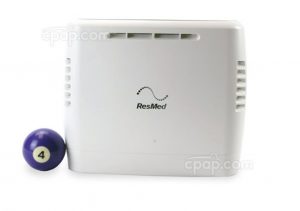
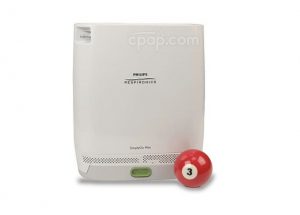
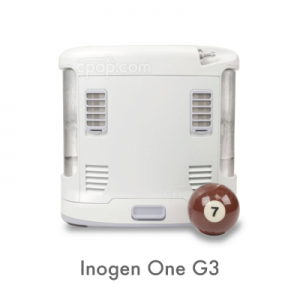
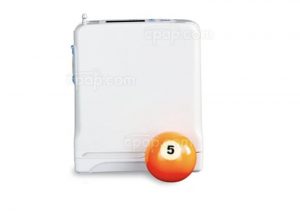
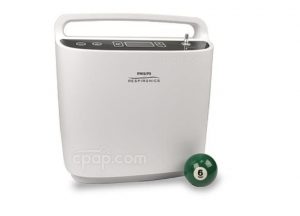
4 Responses
I purchased the ResMed Airsence 10 because I was told that they were usable in Europe with the 60 hertz electrical power and I purchased the correct adapter for Europe. I plugged it in an outlet at the Horel Vienna and it ruined the unit without a sound. I had to back pack it for 32 days. At least the company replaced it without charge. I was 66 at the time hiking mountains with brocitus,,,,with poor sleep I ended with pneumonia. I want to travel along the equator. To India and Malaysia. Please help with experienced advice. Sincerely. GD
Hey Glenn! I’ve notified our CPAP experts, who will be getting in touch with you to answer your question. Thanks for your post!
My wife uses a c-pap along with an oxygen concentrator but she only needs oxygen when she sleeps we want to get back into tent camping but of course there is no power where we go camping. What I am looking for is portable AC/DC concentrator that she can use as a backup to her home concentrator if need be but what I’m mostly interested in is a concentrator that can run for 6-8 hours a night on battery power.
I’m also looking into a solar generator so she can plug in her c-pap and concentrator into at night while camping. She is normally on 1.5 LPM but being at altitude she might have to go up to 2.5 or even 3.0 LPM. What unit would you recommend for her and what are your thoughts on a concentrator running off of a solar generator, what size or what wattage does a concentrator need to run properly and is it okay to run it from an inverter?
Hello D. Sanchez, please see the link below for the Oxygen Concentrator that I would recommend. Also, for answers to your other questions regarding wattage and if it’s ok for the concentrator to run from an inverter, I would strongly suggest that you speak with the manufacturer of the product which in this case is ResMed.
https://www.cpap.com/productpage/resmed-mobi-portable-oxygen-concentrator#features-tab
If you have further questions, or concerns regarding the ResMed Mobi Portable Oxygen Concentrator, or anything else, please feel free to reach us at: 1-800-356-5221, or via e-mail: cpap@cpap.com.
Have a great day!
Carol M.